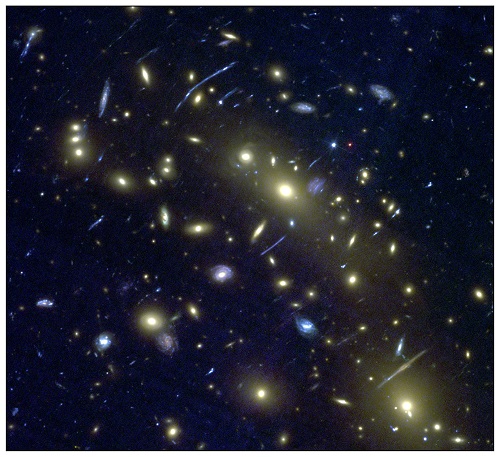ASTRONOMY
Hocking's new algorithm teaches supercomputer how to see the stars

A team of astronomers and computer scientists at the University of Hertfordshire have taught a machine to 'see' astronomical images. The technique, which uses a form of artificial intelligence called unsupervised machine learning, allows galaxies to be automatically classified at high speed, something previously done by thousands of human volunteers in projects like Galaxy Zoo. Masters student Alex Hocking led the new work and presented it for the first time in a paper today (July 8) at the National Astronomy Meeting at Venue Cymru, Llandudno, Wales.
The team have demonstrated their algorithm using data from the Hubble Space Telescope ‘Frontier Fields’: exquisite images of distant clusters of galaxies that contain several different types of galaxy.
Mr Hocking, who led the new work, commented: “The important thing about our algorithm is that we have not told the machine what to look for in the images, but instead taught it how to 'see'."
His supervisor and fellow team member Dr James Geach added: “A human looking at these images can intuitively pick out and instinctively classify different types of object without being given any additional information. We have taught a machine to do the same thing."
‘Our aim is to deploy this tool on the next generation of giant imaging surveys where no human, or even group of humans, could closely inspect every piece of data. But this algorithm has a huge number of applications far beyond astronomy, and investigating these applications will be our next step," concludes Geach.
The scientists are now looking for collaborators, making good use of the technique in applications like medicine, where it could for example help doctors to spot tumours, and in security, to find suspicious items in airport scans.
 Visualisation of the neural network representing the ‘brain’ of the machine learning algorithm. The intersections of lines are called nodes, and these represent a map of the input data. Nodes that are closer to each other represent similar features within the data. Fainter lines show how the network has evolved over time as the algorithm processes more data. Credit: J. Geach / A. Hocking.
Visualisation of the neural network representing the ‘brain’ of the machine learning algorithm. The intersections of lines are called nodes, and these represent a map of the input data. Nodes that are closer to each other represent similar features within the data. Fainter lines show how the network has evolved over time as the algorithm processes more data. Credit: J. Geach / A. Hocking.
 A zoom-in of part of the network described above. Credit: J. Geach / A. Hocking.
A zoom-in of part of the network described above. Credit: J. Geach / A. Hocking.
 Image showing the MACS0416.1-2403 cluster, highlighting parts of the image that the algorithm has identified as ‘star-forming’ galaxies. Credit: NASA / ESA / J. Geach / A. Hocking.
Image showing the MACS0416.1-2403 cluster, highlighting parts of the image that the algorithm has identified as ‘star-forming’ galaxies. Credit: NASA / ESA / J. Geach / A. Hocking.
 Image showing the MACS0416.1-2403 cluster, highlighting parts of the image that the algorithm has identified as ‘elliptical’ galaxies. Credit: NASA / ESA / J. Geach / A. Hocking.
Image showing the MACS0416.1-2403 cluster, highlighting parts of the image that the algorithm has identified as ‘elliptical’ galaxies. Credit: NASA / ESA / J. Geach / A. Hocking.

